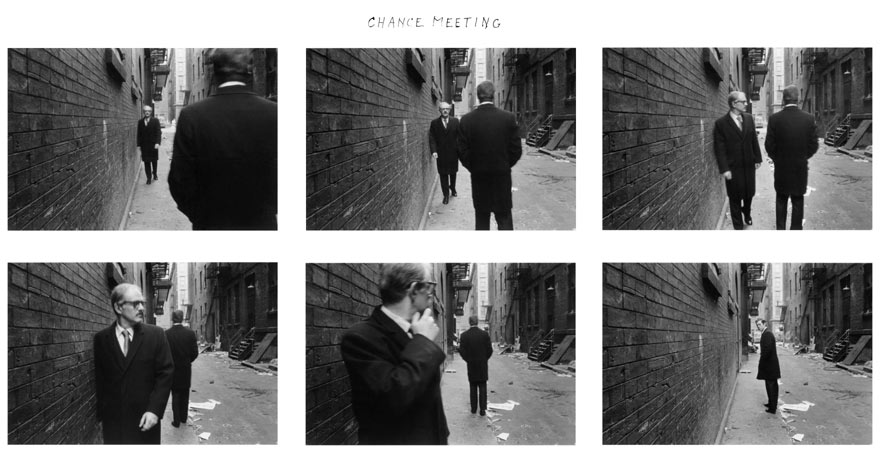Sep
2017
Narrative Sequence Photography
 William Wegman, Folly, Soucy, Man Ray, 1973, gelatin silver print
William Wegman, Folly, Soucy, Man Ray, 1973, gelatin silver print
William Wegman, Falling Glass, 1972, gelatin silver print
Duane Michals, Chance Meeting, 1970, gelatin silver print
*Keith F. Davis, < An American Century of Photography: From Dry-Plate To Digital >, Hallmark Cards, Inc., 1995, p.303
Narrative Sequence Photography
It is convincing that Keith Davis ‘s grasp why the 70’ s photography became difficult. Photography faces challenges in contemporary art, in political society, in broadcast culture, in new generations, and in photography itself. The complicated situation of the 70s was pushed up to the photograph like a tsunami, and the photograph became difficult. Since the 1970s, photographs have moved away from the small, narrow fences that have surrounded them to a wider visual world. At this time, Duane Michael of ‘Sequence Photography’ and William Wegman of Art & Language are the leading leaders, who brought out the expression of innovative photographs. Duane Michael has expanded the expressiveness of his photographs through directing and sequence photography, and William Wegman has extended the expressiveness of photography through real objects.
The 70’s photographic arts are represented by ‘New Color Photography’, ‘New Topography’, and ‘Sequence Photography’. New color photography and New Topography are the aesthetics of photography itself. Sequence photography, on the other hand, came from conceptual art. Until the late 70s, three images expanded in their respective areas. With the emergence of Cindy Sherman and the emergence of postmodernism, New Color Photography and New Topography are backing out. The narrative sequence is further expanded. From the end of the seventies, the art of photography gradually progresses to series photographs and theme photographs. From this point on, the narrative sequence shines. As a result, the 80s become a more complex language for photography, competition for meaning, and competition for storytelling.

